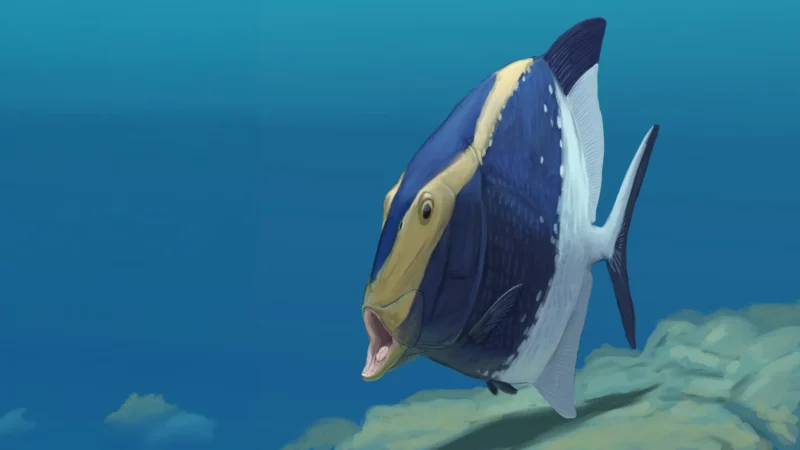Top Highlights
-
Discovery of Early Evolution: Researchers identified a 310-million-year-old fossilized ray-finned fish, Platysomus parvulus, showcasing the earliest known ‘tongue bite’ feeding mechanism, unlike any previously found in ancient fish.
-
Unique Feeding Mechanism: This fish employed a specialized set of teeth both on the roof and floor of its mouth, allowing it to crush and consume tough prey, marking an evolutionary step in feeding strategies post-End-Devonian Mass Extinction.
-
Innovative Research Techniques: High-resolution CT scanning provided 3D insights into its anatomy, revealing a transitional tooth structure indicative of the evolution from simple jawed fish to more advanced tongue-biting species.
-
Significance for Evolutionary Biology: The findings highlight a period of rapid innovation among ray-finned fishes, shedding light on ancient ecosystems, fish evolution, and the emergence of modern fish lineages.
Unveiling the Past
Recent discoveries reveal a fascinating chapter in fish evolution. Researchers uncovered a 310-million-year-old fossil of the Platysomus parvulus, a ray-finned fish with an extraordinary feeding mechanism. This ancient creature possessed a unique “tongue bite,” using specialized teeth located on the roof and floor of its mouth. Unlike most of its contemporaries, the Platysomus utilized this arrangement to crush tough prey like shells and insects. This evolutionary marvel hints at how ancient species adapted after the End-Devonian Mass Extinction, which wiped out many fish.
By utilizing advanced high-resolution CT scanning, scientists reconstructed the internal structure of this remarkable fossil. Such technology provides an unprecedented look at its anatomy, revealing a complex multi-part tooth plate. Interestingly, this fossil suggests a transitional phase in the evolution of more sophisticated feeding systems. For example, later fish, such as Bobasatrania, relied solely on their tongue bite for feeding, emphasizing how diverse adaptations emerged after extinction events.
Implications for Modern Understanding
The discovery of the Platysomus highlights a pivotal period in the evolutionary timeline. Its unique feeding method showcases a sophisticated approach to survival in challenging environments. The evolution of tongue bites represents one of many innovations that allowed fish to diversify their diets. Such findings could offer insights into the adaptability of life itself, showcasing how species evolve in response to ecological pressures.
Understanding these ancient mechanisms helps clarify the evolutionary pathways that lead to modern species. This research not only enhances our grasp of fish anatomy but also informs broader ecological and biological concepts. It challenges us to consider how every organism must adapt to survive and thrive through changing conditions.
Discover More Technology Insights
Learn how the Internet of Things (IoT) is transforming everyday life.
Access comprehensive resources on technology by visiting Wikipedia.
TechV1

